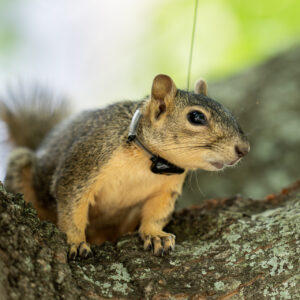 |
Dr. Charlie Rush – Plant Pathology Program Director Dr. Madeleine Smith – Vector Specialist |
Introduction
Rhizomania or ’root madness’ is a disease caused by the virus Beet necrotic yellow vein virus (BNYVV). Symptoms include yellow upright foliage and proliferation of lateral roots. Occasionally leaves will have bright yellow veins after which the virus gets its name.
BNYVV is now present throughout all the major sugar beet growing regions in the world. It is economically important because it reduces the amount and quality of the sugar produced from an infected beet and hence the amount of money a grower will receive.
Beet soil borne mosaic virus (BSBMV) is closely related to BNYVV and is often found together with BNYVV in the same plant. This has raised concern about virus recombination because none of the US germplasm is resistant to BSBMV. Most commercial beet varieties are resistant to BNYVV (most carry the Holly (Rz1) gene), however, with the increase in acres planted to beet varieties resistant to BNYVV, the possibility of selection for new more resistant strains of this virus has increased. In 2002, a strain of BNYVV was found in California’s Imperial Valley on a beet variety that should have been resistant to BNYVV. USDA in Salinas CA confirmed virulence of this isolate on resistant sugar beets, putting nearly all of the US germplasm at risk.
BNYVV is vectored by a soil-borne protist called Polymyxa betae. P. betae infects the roots of sugar beet and completes its life cycle inside the sugar beet roots. At some point during this process, it transfers BNYVV in to the plant. P. betae can stay viable in the soil for many years, and, when conditions are right, is capable of infecting plants and transmitting the virus.
Aims of the Sugar Beet Virus Research Program at Texas A&M Agrilife Research:
By studying the interactions of BNYVV and BSBMV with their host and their vector (P. betae), we hope to provide better control strategies and disease forcasting. The specific objectives of the project are broadly divided in to two areas: virus epidemiology and evolution; and virus-vector-plant interactions. Specific objectives are listed below.
1. Quantify intraspecific genotypic variation among isolates of BNYVV and BSBMV.
We have found deletions in the read-through protein (75 KDa) of BSBMV ranging in size from 363 bp to 460 bp. The 75 KDa read-through protein is one of the six open reading frames (ORF’s) of BSBMV and BNYVV RNA2. It is a complex which contains the coat protein and 495 additional amino acids, and results from the translational suppression of the coat protein termination codon. It has been shown to be essential for transmission of BNYVV virus by Polymyxa betae. Deletions in isolates from North Dakota, Colorado, and Texas removed a significant part of the read-through gene, but do not appear to have any effect on serological detection or transmission of the virus by Polymyxa betae. Similar studies with both BSBMV and BNYVV continue.
2. Relate virus genotype to incidence and severity of infection in resistant and susceptible sugar beet cultivars.
In studies of soil from BNYVV resistance trials in the American Crystal and Southern Minnesota regions, we have found that variety trials Beta 4818, HM 2411, Crystal 999, and HM 7169 contained the major percentage of BNYVV infection. BSBMV was found in a high proportion of the cultivars and a few cultivars were infected with both viruses. It would be interesting to elucidate the epidemiological relationship between the two viruses.
3. Measure disease tolerance among BNYVV tolerant cultivars by quantitative PCR.
In order to determine whether sugar beet cultivars perform well as a result of genetic resistance or regional adaptability, fluorescent real-time PCR will be used to quantify viral titer in susceptible and disease tolerant cultivars. Susceptible and resistant beet cultivars will be infested with BNYVV and ELISA analysis will be performed to determine viral infection. RNA extracted from the infected roots will be analyzed by fluorescent real-time PCR to quantify viral titer in the roots of the sugar beet seedlings. Quantitative results of viral tolerance will be obtained.
4. Characterize the dynamics of inoculum of wild-type and resistance breaking BNYVV, and BSBMV produced from differentially resistant hosts, in mixed virus populations
5. Determine the character, and 3-dimensional distribution, of root infection by mixed viral populations, emanating from a single point inoculum source.
| Resources |





